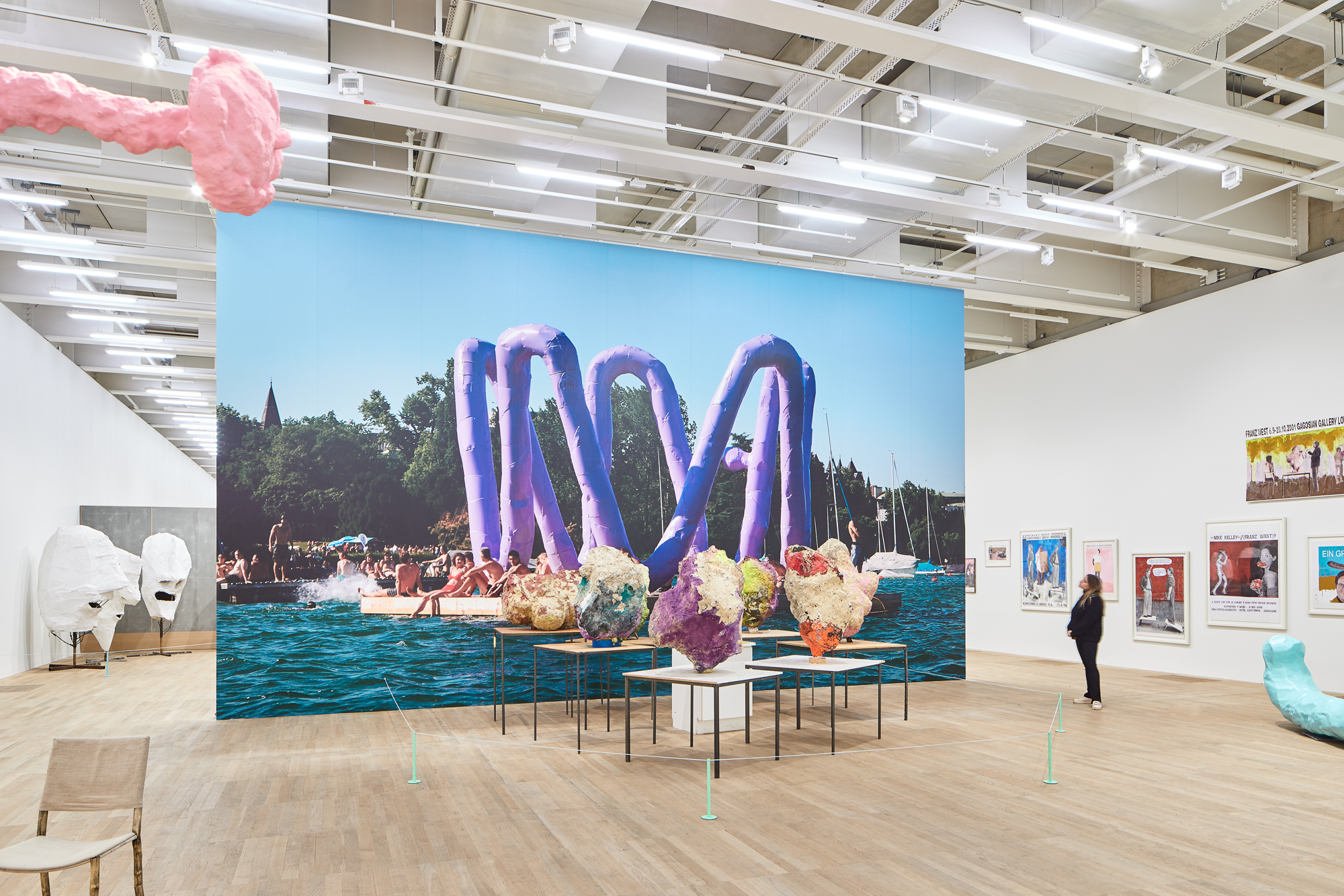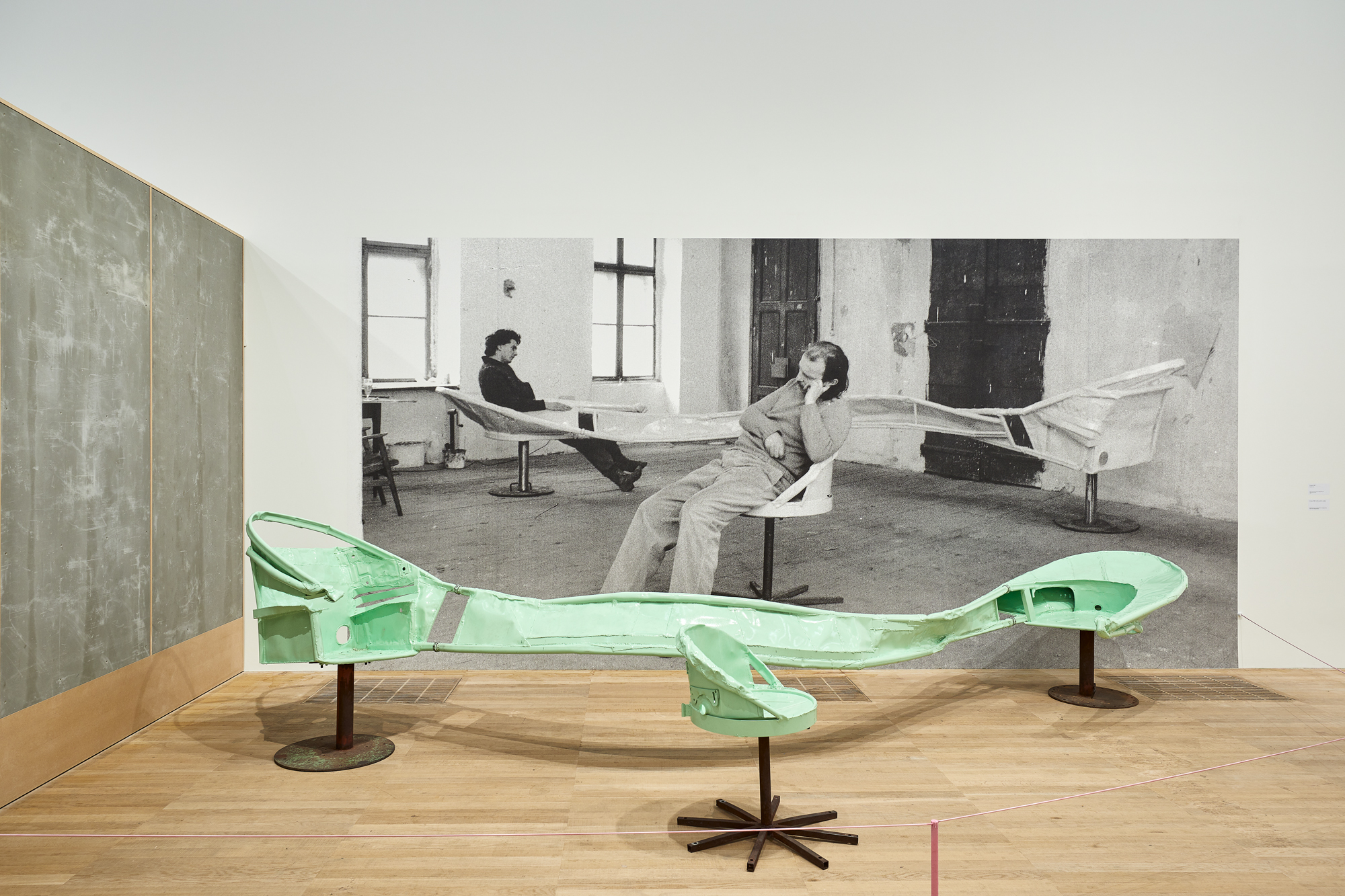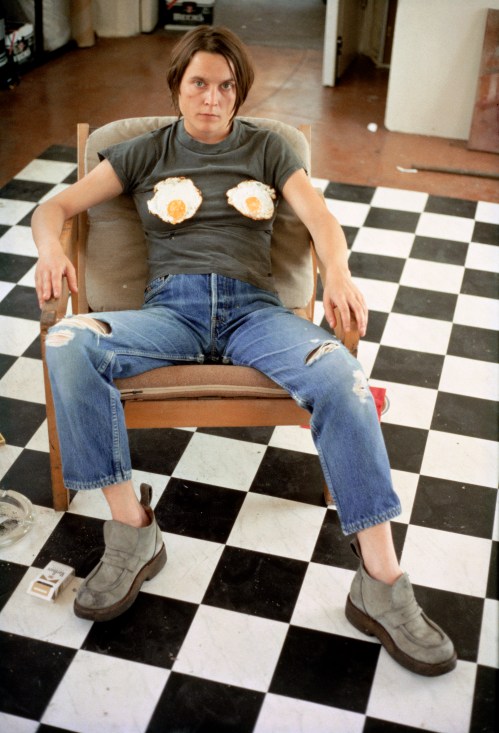What unites the work of Franz West, Sarah Lucas and Marcel Duchamp? They are all taking the piss! Literally, rather than metaphorically, too. All three have made work about the smallest room in the house. About talking to a man about a horse. About spending a penny. They’ve used and transformed the intimacy, humour and architectural necessities of the toilet to add some drama and comedy to their art.
More obviously — and traditionally — also linking them all together is the Tate. Sarah Lucas has just created a series of pedestals and screens for the display of Franz West’s retrospective at Tate Modern. The only precedent for this artist/artist collaboration is a Marcel Duchamp show from 1966, which had the involvement of fellow artist Richard Hamilton.
Duchamp, of course, popularised the piss-taking readymade with his Fountain of 1917. For this retrospective of Franz West, the Tate tried to install the Austrian sculptor’s work, Etude de couleur, on the gallery’s roof. Etude de couleur is a work Franz created in 1991 for Munster Skulptur Projekte; it is a working, brightly coloured urinal. Unfortunately they couldn’t logistically make it happen, but you can only imagine the joy it would have sparked in the Tate’s gazed-upon neighbours. Instead they’ve installed a photograph on the piece in the exhibition. Sarah is sitting in front of a photo of it, on a sofa Franz designed, discussing the exhibition.

Even though they were a generation and a world apart, Franz and Sarah were close friends and collaborators, until the Austrian artist died in 2012. Franz came of age in the 70s in Vienna, Sarah in the 90s in London. Part of two very different artworlds, too. Sarah was part of a generation of iconoclastic British conceptual artists who caused controversy and consternation, were thrust into the spotlight as soon as they graduated. Franz worked in obscurity throughout much of his career, was working in reaction against the controversial Viennese Actionists of his time. But both are primarily sculptors, and their work shares many aspects — an interest in the body and sex, an often dirty sense of humour, a cheeky joy, a splintering across different forms, a fondness for weird, winding, abstract, curling shapes.
It was this that led the Tate, and the exhibition’s curator Mark Godfrey, to ask Sarah to collaborate on the show. In more general terms, Franz was a tireless collaborator — he enlisted artists to paint his papier mache sculptures, or incorporated their work wholesale into larger pieces he made. He worked with filmmakers and musicians and even the audience, encouraging them to pick up objects, play and interact with them. Sarah has utilised breeze blocks, cardboard boxes and concrete to create the the staging for the show. It’s a rather lovely, un-egotistical gesture.
“I started with my usual idea of the pedestal,” Sarah explains of her approach to the exhibition. “I used to have a real pedestal problem with my work. Because I make quite self-contained sculptures, putting it on something becomes quite weird. So I started using breeze blocks, because you can just turn up with them, mess around with the scale of them, change the height when you change your mind. Also they’re grey, which really makes the colours stand out.”

Sarah is rather humbly selling herself short, but you get the feeling she’s happy to let Franz’s work be the star. Franz might not quite be a household name, but you will almost certainly recognise his most famous works. Big curling abstract sausage-like sculptures, doodles realised in three dimensions. Often painted in distinctive neon pinks and greens. One simple but fun gesture in the show, is that the stanchions and ropes used to protect the sculptures from the audience in those same colours, and then they were covered in masking tape to mimic the uneven textured surfaces of Franz’s work.
But the exhibition goes deeper than the greatest hits. The early drawings exhibited here are a beautiful revelation. They are funny and gross and cute. There’s a lightness to Franz’s work, a serious commitment to ease. “He was the most inspiring artist,” Sarah says. “Because it’s really about making art with whatever you’ve got, you don’t need fancy materials or something like that, it’s just about the joy of it. You don’t even have to have an idea, that is the real genius of Franz.” Well now Sarah is maybe doing Franz a bit of a disservice – his work took in a lot of Big Theories – he was devoted to Wittgenstein, and made many works that explored the philosopher’s theories about the meaninglessness of language, and much of Franz’s work sprung from an interest in Freud’s ideas of childhood, motherhood, the body, subconscious and unconscious. It’s also important to understand the playfulness of Franz’s work as a reaction to the bodily, violent nihilistic performance work of the Viennese Actionists, who were the dominant artistic avant garde at the time in Vienna (one of the performances Franz himself witnessed featured an artist shitting, masturbating, drinking his own piss and singing the Austrian national anthem).
Franz was self-taught, and as Sarah says, joy is at the heart of his approach, his art is all about pleasure and freedom. He started working in the 70s, and worked in relative obscurity until the late 80s, when he become quite well known and quite successful. Sarah came of age around that time as part of the YBAs. Her work and Franz’s share many a similar concern, although Sarah didn’t know about Franz at the time — “I just think we’ve probably had a similar artistic motivation” — eventually Franz asked her to be part of a show at the Austrian Cultural Centre in London, and then an exhibition he curated during the Venice Biennale called Hamster Wheel.

“It was wasn’t officially a part of the Biennale. I don’t know how, but he’d managed to get hold of some great big space on the other side of the Arsenale and he invited various people he liked to be involved in this show. So I went along and did that, it was really really difficult to get to. It was like a two minute boat ride away, but there were no boats, because these artists called Gelatin had created a load of rafts and decided to row people backwards and forwards, but they decided to do it completely naked. I think it was shut down by the police. It was hilarious and that’s when I first got to Franz personally.” Franz and Sarah made one collaborative work together. Franz made a sculpture, a “big, rock-like thing”, sent it to Sarah, who simply added a fried egg to it. Which I think says a lot about the simplicity and sense of fun of both of them when it comes to making work. Another example. Sarah once asked Franz why he was so interested in her work, and he replied, quite bluntly, “chairs”.


